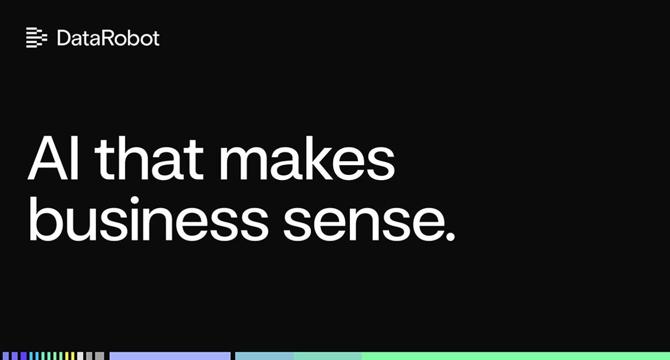Data Science News
Towards Data Science
4

The Total Derivative: Correcting the Misconception of Backpropagation’s Chain Rule
- Backpropagation often misrepresents the chain rule as a single-variable one instead of the more general total derivative which accounts for complex dependencies.
- The total derivative is crucial in backpropagation due to layers' interdependence, where weights indirectly affect subsequent layers.
- The article explains how the vector chain rule solves problems in backpropagation involving multi-neuron layers and total derivatives.
- It covers the total derivative concept, notation, and forward pass in neural networks to derive gradients for weights efficiently.
- The article details the necessary matrix operations and chain rule applications for calculating gradients in hidden and output layers.
- Pre-computing gradients simplifies backpropagation by reusing already calculated values for efficient gradient computation.
- Understanding the chain rules and derivative calculations is essential for grasping the intricacies of backpropagation.
- The article concludes with insights on confusion around chain rules and the simplified approach to implementing backpropagation using matrix operations.
- Practical examples like training a neural network on the iris dataset using numpy demonstrate the concepts discussed in the article.
- Backpropagation's efficiency relies on proper understanding and application of the total derivative and vector chain rule in neural network training.
- The implementation in the article reinforces the importance of clear mathematics in training neural networks effectively.
Read Full Article
Like
Towards Data Science
294

Make Your Data Move: Creating Animations in Python for Science and Machine Learning
- Animations can enhance the understanding of complex scientific and mathematical concepts by visually illustrating processes through a sequence of frames.
- Python and Matplotlib can be utilized to create animations for various purposes, such as explaining Machine Learning algorithms, demonstrating physics concepts, or visualizing math principles.
- The tutorial covers topics like basic animation setup, animating math examples like the Fourier series, physics examples like the Oblique Launch, and showcasing Machine Learning in action with Gradient Descent.
- For basic animation setup using Matplotlib, the tutorial demonstrates animating the sine function by defining data, creating plots, and updating functions to generate sequential frames.
- Animating physics examples involves defining motion parameters, computing trajectories, setting up plots, and creating animations to illustrate scenarios like the Oblique Launch.
- In animating math examples like the Fourier series, the tutorial explains creating approximations of square waves using sine functions and updating the animations with each term addition.
- Illustrating Machine Learning concepts, specifically Gradient Descent, highlights how the algorithm finds minima on parabolic functions by showcasing the steps involved in the process through animations.
- Exporting animated plots to files like GIFs for web and presentations can be done using Matplotlib's save function, aiding in sharing visual representations of concepts.
- The article emphasizes the potential of animations in enhancing educational materials, technical presentations, and research reports, suggesting readers experiment with the examples provided to create impactful visuals.
- References to additional resources for utilizing Matplotlib for animations are provided for further exploration and learning.
- The tutorial encourages readers to engage with the examples presented to create their animations and simulations tailored to their respective fields, allowing for more engaging and interactive data presentations.
Read Full Article
17 Likes
VentureBeat
173

Meet the new king of AI coding: Google’s Gemini 2.5 Pro I/O Edition dethrones Claude 3.7 Sonnet
- Google has released Gemini 2.5 Pro "I/O" edition, an advanced AI coding model surpassing its predecessors.
- The new model is available for indie developers on Google AI Studio and enterprises on Vertex AI.
- Features include matching visual styles, creating learning apps, and designing components with minimal CSS editing.
- Gemini 2.5 Pro has a pricing model of $1.25/$10 per million tokens in/out.
- It has overtaken Claude 3.7 Sonnet in the WebDev Arena Leaderboard based on human preference for web app generation.
- Gemini's reliability and performance boost have impressed developers and platform leaders.
- The model has received positive feedback for refactoring systems and reducing tool call failures.
- Gemini 2.5 Pro has been praised for its code and UI generation capabilities by industry experts.
- Users have created interactive simulations and games swiftly using Gemini 2.5 Pro.
- DeepMind has focused on making coding more intuitive and efficient with Gemini 2.5 Pro.
- The model aims to streamline the development process and cater to real-world coding challenges effectively.
Read Full Article
10 Likes
VentureBeat
169

Image Credit: VentureBeat
Lightricks just made AI video generation 30x faster — and you won’t need a $10,000 GPU
- Lightricks has introduced the LTX Video 13-billion-parameter model, which allows for fast AI video generation on consumer-grade hardware.
- The LTXV-13B model utilizes multiscale rendering to generate high-quality videos in progressive layers of detail, providing efficiency and saving costs for users.
- Unlike other leading models that require enterprise GPUs, LTXV-13B can run on consumer-grade GPUs like Nvidia's gaming hardware.
- The model's efficiency is attributed to its multiscale rendering approach, which generates details gradually, optimizing VRAM usage.
- LTXV-13B features a compressed latent space that reduces memory requirements while maintaining video quality.
- Lightricks has made LTXV-13B fully open source, available on platforms like Hugging Face and GitHub, to encourage research and development in the AI community.
- Partnerships with Getty Images and Shutterstock provide Lightricks access to licensed content for model training, reducing legal risks for commercial applications.
- Lightricks offers LTXV-13B free to license for enterprises with under $10 million in annual revenue, aiming to build a community and demonstrate the model's value.
- The company plans to negotiate licensing agreements with larger companies that find success with the model, following a similar approach to game engines.
- While LTXV-13B represents advancements in AI video generation, Lightricks acknowledges limitations compared to Hollywood movies, with practical applications in animation and production.
Read Full Article
10 Likes
Hackernoon
80

Image Credit: Hackernoon
Optimizing Language Models: Decoding Griffin’s Local Attention and Memory Efficiency
- The article discusses the optimization of language models by decoding Griffin's local attention and memory efficiency, focusing on various aspects of model architecture and efficiency.
- Griffin incorporates recurrent blocks and local attention layers in its temporal mixing blocks, showing superior performance over global attention MQA Transformers across different sequence lengths.
- Even with a fixed local attention window size of 1024, Griffin outperforms global attention MQA Transformers, but the performance gap narrows with increasing sequence length.
- Models trained on sequence lengths of 2048, 4096, and 8192 tokens reveal insights into the impact of local attention window sizes on model performance.
- The article also delves into inference speeds, estimating memory-boundedness for components like linear layers and self-attention in recurrent and Transformer models.
- Analysis of cache sizes in recurrent and Transformer models emphasizes the transition from a 'parameter bound' to a 'cache bound' regime with larger sequence lengths.
- Further results on next token prediction with longer contexts and details of tasks like Selective Copying and Induction Heads are also presented in the article.
- The article provides valuable insights into optimizing language models for efficiency and performance, contributing to advancements in the field of natural language processing.
Read Full Article
4 Likes
Analyticsindiamag
218

Microsoft’s New Surface Laptop Runs Faster Than MacBook Air M3
- Microsoft has introduced two new devices - a 13-inch Surface Laptop and a 12-inch Surface Pro, powered by Snapdragon X Plus processors with integrated 45 TOPS NPUs, set to launch on May 20.
- The Surface Laptop is priced at $899 and the Surface Pro at $799, focusing on delivering faster Windows PCs with integrated AI capabilities.
- Both devices offer AI features like Recall and Click to Do, with the Surface Laptop claimed to be 50% faster than the Surface Laptop 5 and outperforming Apple's MacBook Air M3.
- The devices support AI applications, will be available for enterprise customers from July 22, and include sustainability improvements like recycled materials in their design.
Read Full Article
13 Likes
Analyticsindiamag
142

Google’s Gemini 2.5 Pro Now Best at Building Web Apps
- Google's Gemini 2.5 Pro Preview model has received an update, making it the top performer in the WebDev Arena Leaderboard with a score of 1419.95 points.
- The new Gemini 2.5 Pro version features enhanced coding capabilities and reduced failure rates, lauded by Cursor's CEO Michael Truell.
- Available through the Gemini API, the model can be accessed via Google AI Studio and Vertex AI for developers. It also offers web app development capabilities through the Gemini app's Canvas feature.
- Despite its high rankings, Google's Gemini 2.5 Pro faces competition from OpenAI's o3 model, which outperformed it in the Aider Polyglot leaderboard with a score of 79.6%.
Read Full Article
8 Likes
Analyticsindiamag
423

This YC-Backed Startup Just Made Finding Blue Collar Jobs in India ‘300% Easier’
- Vahan AI, a YC-backed AI recruitment startup, is using OpenAI’s technology to improve how blue-collar workers are hired across India.
- The platform matches job seekers with relevant roles and helps employers find suitable candidates.
- Vahan AI has placed at least five lakh workers in more than 480 cities and works with companies like Zomato, Swiggy, Flipkart, and Uber.
- The AI recruiter acts as a digital assistant, increasing human recruiter productivity by 300%, bridging the gap between employers and blue-collar workers in India.
Read Full Article
25 Likes
VentureBeat
102

Image Credit: VentureBeat
Report: OpenAI is buying AI-powered developer platform Windsurf — what happens to its support for rival LLMs?
- OpenAI is set to acquire AI-powered developer platform Windsurf for $3 billion, aimed at enhancing AI-driven coding assistants competition.
- Windsurf, previously known as Exafunction, was founded in 2021 and has gained over 800,000 developer users and 1,000 enterprises as customers.
- Windsurf offers flexibility in selecting large language models (LLMs) for code writing, including OpenAI's GPT-4o and Anthropic's Claude 3.5 Sonnet.
- Concerns arise on whether OpenAI will restrict users to its model families post-acquisition, potentially impacting Windsurf's user base and developer community.
Read Full Article
6 Likes
Medium
320
Image Credit: Medium
The Biggest Problem with Machine Learning Models that No One is Talking About and How to Fix It…
- Machine Learning Models (MLMs) have limitations such as hallucinations, fake alignment, and open-ended outputs, making them unsuitable for many real-world scenarios.
- Classical ML models also face challenges not widely addressed by ML practitioners, impacting their applicability in diverse scenarios.
- The problem of making predictions in real estate markets like Pima County, Arizona, highlights issues in model outputs based on the neighborhood's characteristics and sales history.
- Interpolation and extrapolation play vital roles in determining the reliability of ML model predictions based on the similarity to training data observations.
- Lack of attention to interpolative versus extrapolative predictions is a prevalent issue in AI projects, posing risks in modeling outcomes and decision-making.
- Zillow's venture into iBuying with Zestimate-led house valuations faced challenges due to inaccuracies in predicting property values, leading to substantial financial losses.
- Bayesian Machine Learning introduces a probabilistic approach that considers uncertainties in model predictions by incorporating variance to indicate confidence levels.
- Bayesian methodologies offer a solution to identify high-variance predictions and filter out unreliable estimations, enhancing decision-making processes in automated evaluations.
- Incorporating Bayesian techniques, like Zillow updating Zestimate to provide a range of possible sale prices, showcases the benefits of leveraging probabilistic models in real-world applications.
- Recognizing the importance of distinguishing between interpolative and extrapolative predictions is crucial for improving the reliability and accuracy of ML models in various domains.
- Further discussions on Bayesian versus frequentist ML models will be explored in Part 2 of the article series, emphasizing the advantages and drawbacks of each approach.
Read Full Article
19 Likes
Analyticsindiamag
414

Oracle and Andhra Pradesh Government to Train 400,000 Students in AI, Cloud and Data Science
- Oracle has partnered with the Andhra Pradesh State Skill Development Corporation to provide skills development training in AI, Cloud, and Data Science to 400,000 students.
- The initiative will offer free, structured digital training through Oracle MyLearn, covering over 300 hours of content including Oracle Cloud Infrastructure, AI services, Data Science, APEX, DevOps, and Security.
- The collaboration aims to enhance employability and equip students for technology-driven careers, with a focus on creating a highly skilled IT workforce in Andhra Pradesh.
- Students will have access to tailored learning paths, certifications, and digital badges to showcase their job readiness, contributing to Oracle's mission of empowering youth with future-ready skills in India.
Read Full Article
24 Likes
Medium
231

Image Credit: Medium
GPT-4.5 Orion: The Game-Changing AI Developers and Businesses Can’t Ignore
- OpenAI released GPT-4.5 'Orion' on February 27, 2025, with enhanced reasoning and accuracy, but at a high price of $75/1M input tokens and $150/1M output tokens.
- GPT-4 will be replaced by GPT-4.5 or GPT-4o by April 30, 2025, based on cost and performance considerations for users.
- GPT-4.5 'Orion' is OpenAI's latest and most advanced model before an expected GPT-5 release and emphasizes scale, reasoning, and accuracy.
- Featuring potentially 4-5 trillion parameters, GPT-4.5 showcases significant improvements in reasoning capabilities and factual accuracy.
- The pricing structure for GPT-4.5 is notably higher, sparking debates in the developer community regarding cost and OpenAI's competitive advantage.
- Developers and businesses face decisions between GPT-4o and GPT-4.5, with varying cost implications and migration requirements.
- OpenAI's $40 billion funding round in 2025 provides resources for AI advancements amidst evolving competition, including models from Google and Anthropic.
- Migration from GPT-4 to GPT-4o or GPT-4.5 is required for API users, with considerations for performance needs and cost efficiency.
- Businesses should conduct cost-benefit analyses and optimize token usage when considering the integration of GPT-4.5 into their technology stacks.
- A strategic approach is recommended for deploying AI models like GPT-4.5 'Orion' to maximize benefits while managing costs effectively.
Read Full Article
13 Likes
Analyticsindiamag
196

TEECL Launches Techno Digital Infra with $1 Billion Investment Plan
- TEECL launched Techno Digital Infra with a $1 billion investment plan, targeting a combined capacity of 250 MW across India, aligning with Digital India program.
- The project kicks off in Chennai with a 36 MW hyperscale data centre in SIPCOT IT Park, emphasizing sustainability with renewable energy integration and green practices.
- Techno Digital's hybrid strategy integrates hyperscale and edge data centres to redefine data processing, partnering with RailTel Corporation for edge data centres in 102 cities.
- TEECL aims to uplift various sectors with low-latency computing, focusing on AI, BFSI, telecom, healthcare, and manufacturing, as part of enhancing digital infrastructure in India.
Read Full Article
11 Likes
Datarobot
347

Image Credit: Datarobot
How to avoid hidden costs when scaling agentic AI
- Agentic AI systems offer significant potential in enterprise innovation, but hidden costs can present challenges when scaling.
- The complexity and hidden traps in building and scaling agentic AI systems lead to high costs.
- Simple single-agent use cases can lead to challenges such as increased API usage, infrastructure complexity, and latency issues.
- Scaling to multi-agent architectures can exponentially increase costs due to added complexity and orchestration requirements.
- Agentic AI costs are distributed across various components and decisions within the system.
- Hidden cost traps include manual iteration without cost awareness, overprovisioned infrastructure, and rigid architectures.
- To combat hidden costs, organizations should embed cost-awareness throughout the lifecycle of agentic AI systems.
- Optimizing system components during development helps in finding the right balance between cost, accuracy, and latency.
- Infrastructure-aware orchestration and dynamic workload management can help in efficiently utilizing resources.
- Using AI gateways can provide flexibility for system updates, policy enforcement, and compliance without major architectural changes.
Read Full Article
20 Likes
Analyticsindiamag
106

As AI surges, human development stalls: UNDP report
- A UNDP report indicates that human development has slowed down significantly since the pandemic, with AI being identified as a potential catalyst for reigniting progress.
- The report warns of a potential delay in reaching high human development levels by 2030 if the current sluggish progress trend continues.
- Countries facing low Human Development Index (HDI) scores are grappling with trade tensions, debt crises, and jobless industrialisation.
- India, with a medium HDI score of 0.685, is actively leveraging AI to enhance agriculture support and empower individuals through digital infrastructure.
Read Full Article
6 Likes
For uninterrupted reading, download the app